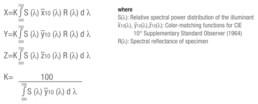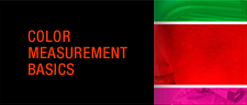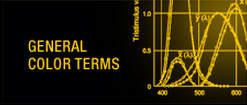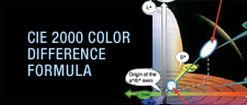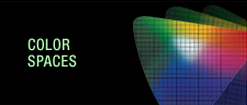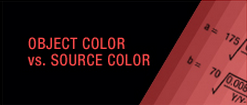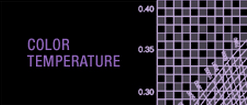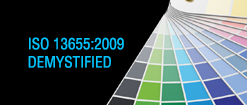General Color Terms
2° Standard Observer and 10° Supplementary Standard Observer
The color sensitivity of the eye changes according to the angle of view (object size). The CIE originally defined the standard observer in 1931 using a 2° field of view, hence the name 2° Standard Observer. In l964, the CIE defined an additional standard observer, this time based upon a l0° field of view; this is referred to as the 10° Supplementary Standard Observer. To give an idea of what a 2° field of view is like compared to a 10° field of view, at a viewing distance of 50cm a 2° field of view would be a φ1.7cm circle while a 10° field of view at the same distance would be φ8.8cm circle. Most of the information in this booklet is based on the 2° Standard Observer. The 2° Standard Observer should be used for viewing angles of 1° to 4°; the 10° Supplementary Standard Observer should be used for viewing angles of more than 4°.

Color-Matching Functions
The color-matching functions are the tristimulus values of the equal-energy spectrum as a function of wavelength.These functions are intended to correspond to the sensitivity of the human eye. Separate sets of three color-matching functions are specified for the 2° Standard Observer and 10° Supplementary Standard Observer.
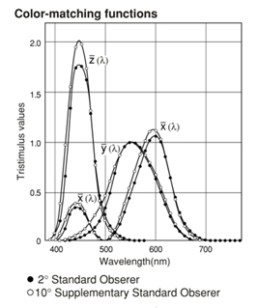
XYZ Tristimulus Values (CIE 1931)
Tristimulus values determined based on the colormatching functions x(λ),y(λ), and z(λ) defined in 1931 by CIE; also referred to as 2° XYZ tristimulus values. They are suitable for a viewing angle of 4° or less and are defined for reflecting objects by the following formulas:
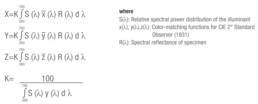
XYZ Tristimulus Values (CIE 1969)
Tristimulus values determined based on the colormatching functions x10(λ), y10(λ),and z10(λ) defined in 1964 by CIE; also referred to as l0° XYZ tristimulus values. They are suitable for a viewing angle of more than 4° and are defined for reflecting objects by the following formulas:
